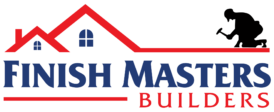Comprehensive Guide to Bathroom Remodeling
MORE THAN 25 YEARS OF EXPERIENCE
From Start to Finish, We Bring Your Vision to Life

Spring Renewal: Transforming Your Westford, MA Deck with Fresh Stain
As the winter frost melts away and nature begins to bloom, homeowners in Westford, Massachusetts, eagerly anticipate the arrival of spring. With its temperate climate and picturesque landscapes, springtime in Westford beckons us outdoors, where we can bask in the warmth of the sun and enjoy the beauty of our surroundings. And what better way to embrace the season than by reviving your outdoor deck with a fresh coat of stain?
The Importance of Deck Staining
Our decks are more than just outdoor platforms; they’re extensions of our homes, serving as gathering spaces for family barbecues, evening soirees, or moments of solitary relaxation. However, constant exposure to the elements can take a toll on even the most robust decking materials. Sunlight, rain, and fluctuating temperatures can cause wood to fade, warp, or even rot over time. That’s where deck staining comes in.
Staining your deck not only enhances its aesthetic appeal but also provides essential protection against moisture, UV rays, and general wear and tear. By sealing the wood surface, you can prolong its lifespan and maintain its structural integrity for years to come. Plus, with a myriad of stain colors and finishes available, you can customize your deck to complement your home’s exterior and reflect your personal style.
Springtime: The Perfect Opportunity
While deck staining can be done year-round, spring offers an ideal window of opportunity for several reasons. First and foremost, the milder weather conditions of spring provide the perfect balance of warmth and low humidity, creating optimal conditions for stain application and drying. Additionally, springtime often marks the beginning of outdoor entertaining season, making it the ideal time to spruce up your deck and prepare it for gatherings with friends and family.
Moreover, tackling deck staining in the spring allows you to address any damage or wear that may have occurred during the winter months. From minor cracks and splinters to more significant structural issues, early intervention can prevent further deterioration and save you from costly repairs down the line.
Choosing the Right Stain
When it comes to selecting a stain for your deck, the options can seem overwhelming. From transparent to semi-transparent, semi-solid, and solid stains, each type offers unique benefits in terms of appearance and protection. Transparent stains allow the natural grain of the wood to show through, while solid stains provide maximum color coverage and durability. Consider factors such as the age and condition of your deck, as well as your desired level of maintenance, when choosing the right stain for your project.
Hiring a Professional
While some homeowners may opt for a DIY approach to deck staining, hiring a professional can ensure a flawless finish and save you time and effort in the long run. A skilled contractor will have the expertise and equipment necessary to properly prepare the surface, apply the stain evenly, and achieve professional-quality results. Additionally, professionals can recommend the best stain products for your specific deck type and environmental conditions, ensuring long-lasting protection and beauty.
Conclusion
As springtime unfolds in Westford, MA, now is the perfect time to breathe new life into your outdoor deck with a fresh coat of stain. Whether you’re preparing for a season of outdoor entertaining or simply looking to enhance your home’s curb appeal, deck staining offers countless benefits in terms of both aesthetics and longevity. So, embrace the spirit of the season and transform your deck into a welcoming oasis where memories are made and moments are cherished for years to come.
Let’s Get Started
Ready to speak with an expert?
